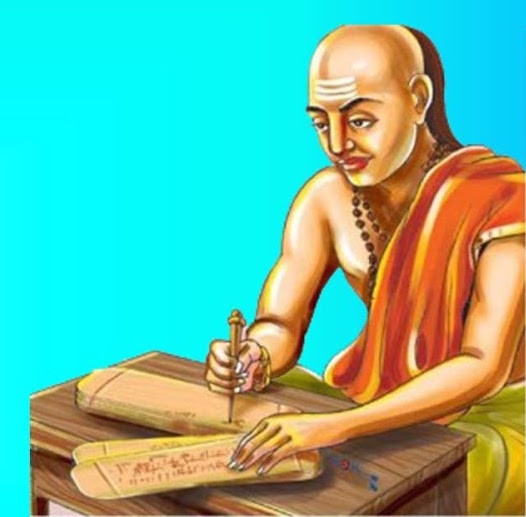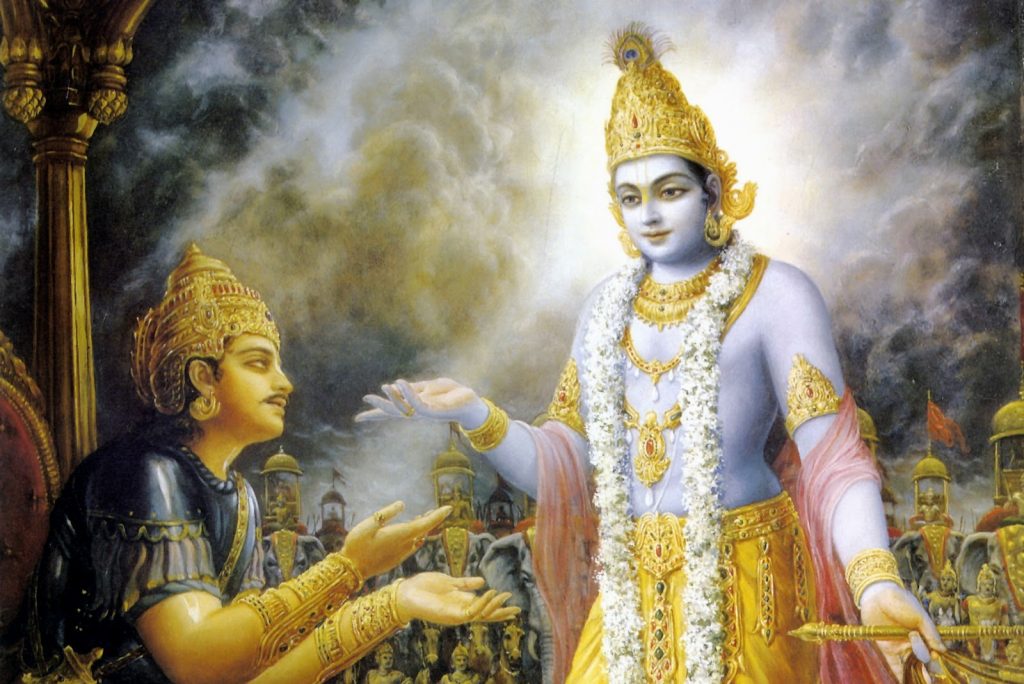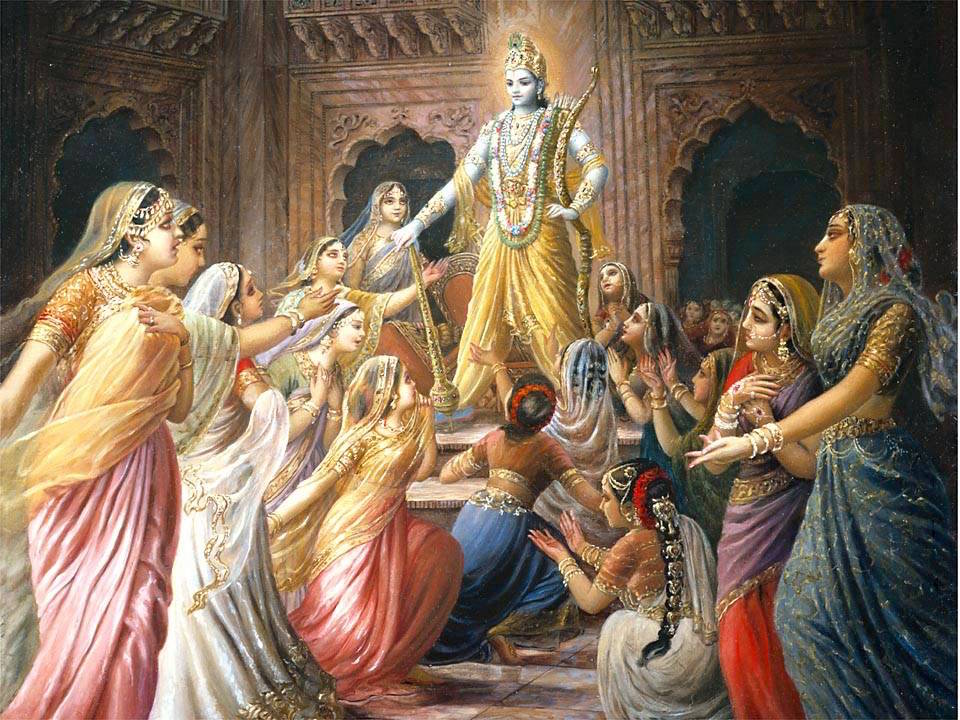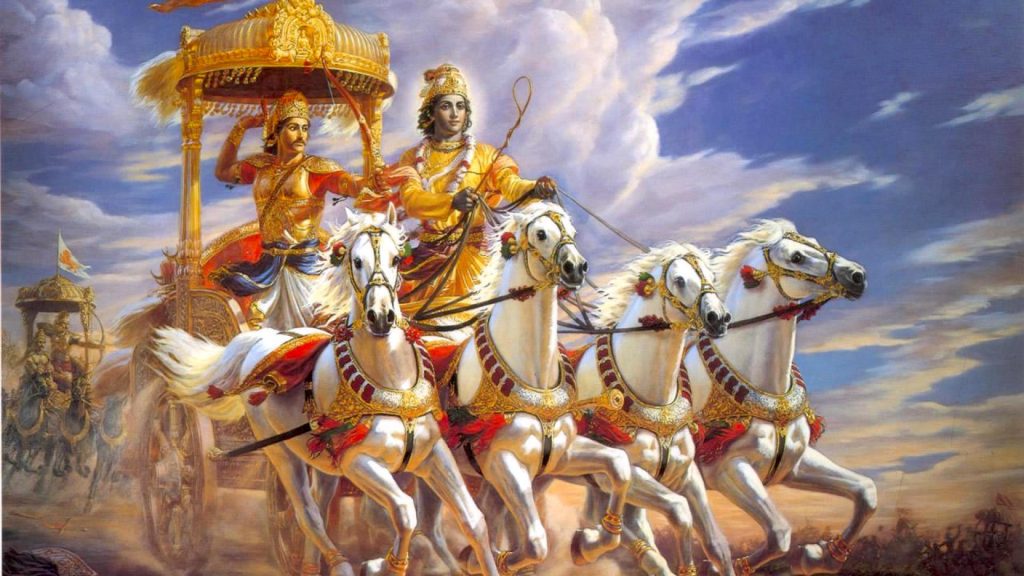The post Reviving the Intellectual Tradition – An Interview with ‘Chanakya’ Pillai appeared first on Dharma Today.
]]> Radhakrishnan Pillai, a well-known author for his several ‘bestseller’ books on Chanakya, from the University of Mumbai, Department of Philosophy is the founder-director of Chanakya Institute of Public leadership (CIPL) a research based organisation that is working to promote Indian concepts in management. His books on Chanakya are used as a text book in various Business schools in India and abroad. With nearly 20 years of combined working and business experience he is a well known management speaker, trainer, author and consultant having represented India in various national and international conferences. He is a visiting faculty in prestigious institutes in India and aborad including the IIT, IIM, Indian Institute of Science (IISc) among others. He has been awarded the prestigious Sardar Patel International award 2009 for his research and contribution in field of management & Industrial development.
Radhakrishnan Pillai, a well-known author for his several ‘bestseller’ books on Chanakya, from the University of Mumbai, Department of Philosophy is the founder-director of Chanakya Institute of Public leadership (CIPL) a research based organisation that is working to promote Indian concepts in management. His books on Chanakya are used as a text book in various Business schools in India and abroad. With nearly 20 years of combined working and business experience he is a well known management speaker, trainer, author and consultant having represented India in various national and international conferences. He is a visiting faculty in prestigious institutes in India and aborad including the IIT, IIM, Indian Institute of Science (IISc) among others. He has been awarded the prestigious Sardar Patel International award 2009 for his research and contribution in field of management & Industrial development.
In a candid chat with Jay Pandya, he shares some of the critical issues with Hinduism from an academic and social view-point and the role of Chanakya in reviving the culture of ‘Intellectual Tradition.’
What is your inspiration and motivation behind not just the name but whole concept of Chanakya which you have taken up?
I have worked in the corporate world, run businesses and of course now I am in academics and teaching. However, I’ve always had a strong thought in my mind since childhood – India as a Nation has always been knowledge-driven culture and so I would differentiate this with a ritual-driven culture. Thanks to my parents, the whole study of scriptures like Bhagavad Gita, Ramayan and Mahabharata were part of my upbringing, being connected to a spiritual organization, the Chinmaya Mission.
I learnt that India has created so much of literature and so much in field of arts, science, technology, philosophy, spirituality. And specifically that our traditions and values are driven by knowledge and not merely sentiments. The thinkers of Vedic times were known as rishis. They were the social, political, economic and spiritual thinkers. They created a culture which is based on thinking and Knowledge. Therefore India is called as Bharata – as in Sanskrit word means Bh (Bhaskara) – Knowledge and Rata – One who is revered in Knowledge. The two broader definitions of types of knowledge are Paramatmika, the Spiritual knowledge, and Vyavaharika, transactional knowledge for worldly dealings.
Today the Indian culture is more dominated by the Adhyatmika part, (spiritual and its associated rituals), which is the most important part, but we have also forgotten that our culture is very strong in the Vyavaharika (social, worldy) part too. That’s what drove me towards studying Chanakya. So when I discovered it, I was amazed! I felt that here is a knowledge of how our society should operate. It talks about economics, warfare strategy, crime and control, law and Order, gemology, Ayurveda, management, leadership and more than 180 total topics. The more I studied, the more I was mesmerised at the practical insights by that great person. And Kautilya Arthashatra has got 6000 sutras in Sanskrit. I went to Kerala and then learnt under a great scholar and a teacher called Dr. Gangadhar Naik. He taught me all 6000 sutras one to one. At that particular time He was a Dean of Adi Shankaracharya Sanskrit University.
Now this part has been totally neglected. India lacks the Vyavharika strength due to its own neglect and ignorance of its own knowledge. This is how I began to work on it.
Which business you were running?
I have a company called as AtmaDarshan which is into spiritual tourism. In my youth days I travelled across the country in a sales job. I also visited temples, ashrams, and spiritual organizations meeting mahatmas. And I found that this is great country with lot of spiritual wealth but never has been showcased. Then I realised here is an opportunity where I can showcase my country in an Indian spiritual way that is better.
It was a great inspiration from within. My heart was riddled with conflict in the begining. Was I trying to sell India or showcase India in a better and honest way? Then I decided not to commercialise business but to spiritualize commerce. Although I began with western methodologies of business, I thought that if my company, which is centred in India, and deals with heritage and culture then it must also have an Indian thought process.
I came across this book called ‘Kautilya Arthashastra’. It was an epitome of and great book on good governance explaining how we trained Chandragupta Maurya, how we made whole kingdom come together, etc. But nobody debates on Chanakya as he is historical character. Not an imaginary character. There are still debates whether Ram existed or not but that debate does not exist with Chanakya. So I have found Chanakya’s works in Germany in German languages. Academic and intellectual communities across the globe accept that he was a historical character.
 He is accepted in western countries but how is he received by all sections of Indian intellectuals?
He is accepted in western countries but how is he received by all sections of Indian intellectuals?
Yes, they all accept him. I have been teaching this for the last 18 years. I am here as a Deputy Director of a University that is unbiased and non-religious. You will be surprised to know that even the Pakistan armed forces are taught Chanakya!
Really! How is it so?
Of course yes. Because it is not about religion but strategy. And now we are waking up. Chanakya strategy is beyond religion, colour, race, generation. Chanakya is very mysterious person. Everybody knows he is very different kind of a sadhu. He is someone whom everyone would want to decode and understand his thinking pattern. If you look at it there are very popular things about Chanakya such as Sama-Dama-Danda-Bheda, enemy’s enemy is a friend etc. All this is there in Indian culture but nobody is knows a depth of it.
Can you tell me how the Arthashastra helped your economic growth? I’m intrigued.
(Smilingly) Before I went to Kerala to study Arthashastra my turnover was 20 lakhs a year. After my study it became 2 crores the very next year! It works. Its not like some old story of a bygone generation.
That’s phenomenal! How did it spread socially?
So friends started calling me to have a discussion, which later made sense to them. They invited me in their companies to give seminars. I delivered around 100 lectures. All course free of cost. Not as a professional. Just sharing of my knowledge. I wrote a research paper called “Management Fundamentals and Kautilya’s Arthashastra.” It became very popular online. Times of India Group read it and asked me to be a columnist. In the Mumbai Mirror, I wrote more than 170+ articles for 4.5 years. That’s how many people came to know about me. Then Jaico, my publishers, said that you speak well on Chanakya, can you write a book for us? I wrote a book ‘Corporate Chanakya’ for them. I have written 6 books on Chanakya and I am writing 18 more books.
18 books in writing along with University responsibilities – how do you get the time?
I enjoy the flow so currently I am doing many projects in parallel. This is Chanakya Kripa (laughs), Gurukripa. The first thing what I did is applied Chanakya’s teaching in my own life. When you teach, you have to make it a part of your life first and then only you can lead by example. Otherwise I have seen so many so called motivational speakers, who have talked a lot and the moment they are out of their speech, you will find the conflict in their personality. They go, they drink and get wild. As Swami Vivekananda quoted, “In the west a tailor makes a gentlemen, in India character makes a gentlemen.”
The best part is I feel the journey has only begun.
That’s an amazing experience when one is doing what suits his svabhav, isn’t it ?
Absolutely! Sometimes you find the way, sometimes the way finds you! In a way I am on a journey that I never planned.
 Can you explain the role of this department you are serving in Mumbai University?
Can you explain the role of this department you are serving in Mumbai University?
I am serving here as a Deputy Director of the newest department of Mumbai University this year. We have set a benchmark globally and we are the first university in the world offering a two year’s Masters full time programme dealing with Leadership as a science which includes Chanakya’s principles. I have designed the program with my Ph.D guide, Dr. Shubhada Joshi.
After studying one personality for over two decades is there anything still intriguing and mysterious, that you haven’t been able to discover or you are mystified by?
Yes. His study of Jyotish shastra. It’s very interesting because Chanakya was a strategist and he did not have a single failure. As one scholar put it nicely, ‘If you understand Chanakya, you will not understand what failure is’. So this is what is intriguing. Traditionally, in India, strategy was not built on western models of permutation and combination of data. I am involved in research on this.
I have started realizing that there is a human mind and there is something called as a universal mind. So through Jyotish, Chanakya is connecting to some higher sources that becomes the part of his strategy. So Chanakya had very deep understanding of forces that work – the seen and the unseen. And that’s mysterious. When you say mysterious, it not something we can’t understand. It’s a science.
The story that all we know is only one part of it. Chanakya found Chandragupta Maurya and he trained him. But why only found Chandragupta Maurya? He was a teacher of political science in Takshashila University and had many students. Some of them became Kings of smaller kingdoms, some of them became ministers, some of them became bureaucrats. Since you cannot invest all your knowledge in a wrong person, he did the calculations and trained Chandragupta Maurya. A farmer makes sure that the seed is right. This is why Chanakya doesn’t fail. I am decoding certain subtle aspects of Chanakya in a scientific way so that we can apply and get benefit in this generation. For me Chanakya is an ongoing mystery!

Would it morally be right to use Chanakya’s strategies in a generation where the entire economics and governance is greed driven? I personally feel that it would be a defeat of the personality of Chanakya. Could Chanakya be relevant today?
Wealth based on spiritual values is what chanakya preached. He says that it is important to make your society wealthy, within and without. You can be ambitious as an industrialist. You can be a wealth creator yet the concept can be of service. Artha shashtras also speak of concept of a world conqueror but not with the method of killing or defeating. It can be with dharmic values too.
Chanakya recommends getting success from outside and inside and yet not getting attached. We talk about Janak Maharaj who was a scholar and also a leader in his own space. Ravana was very successful outside, scientifically, technologically well-developed at that point of time but not developed inside. So the concept by Chanakya for success is a person who balances materialism and spirituality together.
Why do you think that India with such a great tradition has neglected such great personalities in schools?
Some may say that Britishers destroyed us but now its 70 years after britishers left. We too must accept some responsibility for neglecting and thereby destroying Indianism in Indian education system. We must see that every society is responsible for success or failure. Not just outsiders.
It begins with language. I have seen parents of this generation are not even teaching their own children their Matru Bhasha (mother tongue). Their Rashtra Bhasha (national language) forget Deva bhasha (Sanskrit). So I think every child in the education system, but starting from home, should begin the education in four languages including English.
We have to integrate Chanakya, Mahabharat and Ramayana in schools and colleges. Government must incorporate it in its mechanisms. IDSA (Institute of Defence Studies & Analysis) in Delhi is now consulting as to how Artha shastra could be used in war. There are some models here and there in some colleges and schools but it will take a while to spread it.

 What role do you see for spiritual organizations in this revival?
What role do you see for spiritual organizations in this revival?
I think spiritual organizations currently are in the mode of catering to demand supply of the society. That’s not exactly what they are meant to be.
We see a lot of hero worship, mass hysteria in India. Its ok sometimes for the cultural part of it. But there are different philosophies: the bhakti traditions, intellectual traditions, the karma yoga traditions and there are yogic traditions also. When the followers are in the hysteria and hero worship mode it causes exclusivity. We need to understand the need for each other.
Unfortunately today questioning the Guru, who is supposed to be a teacher, is considered something bad. This is not the true spirit of a Parampara or tradition. A debate and a discussion for the betterment must always take place. This culture is compromised and that is a cause of many problems. However some spiritual organizations are doing lot of work like bringing out great publications, holding seminars and lot of intellectual discussions, debating and all those things. Ideal combination is bhakti and intellect.
 That is the difference between shraddha and faith. Shraddha allows you to debate and disagree and present your points, whereas the faith systems do not allow that.
That is the difference between shraddha and faith. Shraddha allows you to debate and disagree and present your points, whereas the faith systems do not allow that.
Yes. I may not agree with what my teacher says but that does not mean I am disrespecting him or her. And if you look all Upanishads they are discussions, debates right?
Even Gita is Samvaad. It’s not a katha, story.
Exactly. We need good teachers and teachers require good students. I always tell in my class, ‘Don’t come to my class to listen to me. First do your research, understand and learn and then come to my class for a healthy discussion. I will give you insights. I can’t read the book for you, you have to read it, you need to question it. Question every answer that I give. And then you have to go back and see if it makes sense.’
In today’s time, many spiritual discussions are becoming prophetic rather than being inspirational or logic driven. Becoming Islamized, Christianised in essence. That’s how abrahamic traditions function. Lord said so…Ram said so… Krishna said so… or our Guru said so…so just close all doors of discrimination. What are your views on this?.
That’s a huge concern. There are commandments in Sanatan Dharma but they are logic driven. ‘Acharya devo Bhava, Atithi devo Bhava, Matru devo Bhava, Pitru devo Bhava’. But you don’t get stuck to commandments only. You look at intellectual growth. Some people have to be given rituals. Some people have to be given to-do list. And as you evolve higher & higher, you mature saying that it stepping stone which is required but there are things beyond that.
 So my challenge has been or rather every teacher’s challenge has been to give knowledge to student in the right amount. So if your level of growth is intellectual, I should be able to give you intellectually convincing questions. I should not cheat you. Sanatan Dharma parampara says that, ‘If you think that your questions are not answered by me, Please go to the next teacher. I’ll recommend you to the next teacher.’ If we don’t like our students going to search, investigate beyond ourselves we are trying to create a cult.
So my challenge has been or rather every teacher’s challenge has been to give knowledge to student in the right amount. So if your level of growth is intellectual, I should be able to give you intellectually convincing questions. I should not cheat you. Sanatan Dharma parampara says that, ‘If you think that your questions are not answered by me, Please go to the next teacher. I’ll recommend you to the next teacher.’ If we don’t like our students going to search, investigate beyond ourselves we are trying to create a cult.
It is always more comfortable to be cultish than to be spiritual. Spirituality takes a lot of courage. In following a cult an individual has no or very little responsibility. Its all about following and not evolving.
We cannot write off the rituals else there will be no traditions. And a tradition must not become a cult. So I think spiritual organizations will also have to evolve. We have started with basic levels but I have seen that to survive 100-500 years you have to adapt to the questions of the intellectual crowd else you will get wiped off. If you have to mature an institution from a school level, to a college level, to a university, then you also have to evolve. Ultimate goal of any spiritual organization is not to create devotees for themselves but to create more knowledgeable people for the society.
The post Reviving the Intellectual Tradition – An Interview with ‘Chanakya’ Pillai appeared first on Dharma Today.
]]>The post What is Dharma for today? appeared first on Dharma Today.
]]>With the rise of the digital age and the ‘world-wide-web’, the concept of conquest has become further complicated. Ordinary folk are connected and empowered as never before. Today, nobody wants to be known as a powerful or ruthless leader, whether it be in military, business or the sciences. Increasingly all the major players in society’s governance want to be seen as ‘friends and well-wishers of the world’ adorned with the virtues of compassion, charity and honesty.
To become something (pious, honest, truthful) you have to actually ‘be’ it internally. But today, to be ‘seen to be’ is sufficient, as no one is bothered about the depth and authenticity of it. So you can market anything by being ‘seen to be’ it. With the erosion of ethics and morality, marketing and packaging have become more important than content. Sentiment of being ‘virtuous’ is being increasingly marketed without the essential quality within. All these together have compulsively driven the concept of conquest from the gross to the subtle. Modern mechanisms of conquests have incorporated monopolizing techniques in business, vulgarity in art, manufacturing perceptions in journalism, misrepresentation in linguistics and so on. The ‘world-wide-web’ has connected everyone in these battles.
Dharma is the original virtue of existence and the original ‘world-wide-web’ encompassing every single facet of creation. It now waits to re-establish its ‘natural brilliance’ by replacing the ‘seen to be’ entities with those who truly represent dharmic values. Virtues are not to be manufactured and marketed by external means. It is a function that is internally present within the fundamental state of everything in creation. It encourages an ‘internal conquest for an external welfare’. Yet although the eternal and truthful are often met with challenges and obstacles, in the final analysis these very challenges and obstacles will create opportunities for Dharma to rise higher and shine brighter than ever before!
Dharma is not a monopoly of any class neither does it monopolize any aspect of life. It invites debate and discussion known as samvaad. Krishna being the absolute truth Himself, had a samvaad with Arjun on the Battlefield of Kurukshetra. He did not impose His intellectual logic on Arjun. Traditionally, differences of opinion were resolved with samvaad. There is, however, a major difference between traditional debates and modern ones. In the former, both parties were essentially ‘seeking the truth’ and concurred on some fundamental definitions of consciousness and character. For instance, Krishna and Arjun both agreed on ‘welfare of humanity’ as a common goal. The debate simply was on how to achieve it. However, in modern times, thought leaders do not necessarily have a moral standing on any issue at hand. In the absence of a virtuous character, lack of loyalty to the subject or sense of purpose – they stand to defeat the very cause they represent. In the competitive mind-space, a winner is who can fire up people rightly or wrongly on ideologies.
Today, espionage is no longer limited to politics and governance – it is about capturing this mind-space. We can easily identify and have accepted corporate espionage as a factual fragment of the social fabric. However, espionage in history and literature, traditions and cultures, ethics and morality, is not that evident to the casual eye and busy fickle mind. It exists, nonetheless. Have we thought about its theatrical representation? Who would be the actors of such a theatre?
You only attempt to conquer something that is worthwhile. India, earlier known as Bharatvarsh, with her vast wealth, rich culture of arts, impeccable traditions and advanced sciences, has been a focal point for conquerors for thousands of years. And beware, this is not a thing of the past but holds true even today. You would think- but that’s incredible! Why or what would anyone try to conquer in today’s advanced, aware and reactive world? This lack of awareness and inability to accurately read the opponents’ motives coupled with the apathy towards the preservation and protection of this grand tradition is weakening the very fabric of India, the world’s oldest dharmic civilization. It is not possible to free-ride on the benefits of this great culture without taking responsibility for its nourishment and preservation. Remaining neutral in this regard is NOT an option.
Awareness, Empowerment and Relevance is Dharma Today.
The post What is Dharma for today? appeared first on Dharma Today.
]]>The post Krishna Janmasthami – Birth of a Lover or an Exterminator or a Statesman appeared first on Dharma Today.
]]>Krishna as an intimate lover
In the Vedic literatures, there is no clear mention of the number of gopis that were in love with Krishna. It ranges from hundreds-thousands-millions to a billion. Primary of them are eight, called as the principal gopis with whom He exchanged incomparable degrees of love and affection.
Merely just by a sense of figures, it is impossible to imitate such a scale of relationships. And qualitatively it is almost impossible to exchange such emotions for even one person throughout our lives, which history has proved time and again.
Krishna as a social reformer
Krishna married 16,108 wives. However, none of these marriages were a peaceful, engagement-wedding-reception-celebration affair. They were all politically significant at that time. All of the marriages represent a political victory along with an ability to take personal responsibility. Of them, these 16,100 princesses rescued from the custody of demon Narakasur would have nowhere to go and with a social stigma on them they would only invite further exploitation. But by marrying them, He gave each one a respectful identity and a status in the society. Indeed, each one of them had a palace for themselves with personal reciprocation with Him! By giving personal shelter to discomforted princesses, He became a great social reformer.

Krishna, the Exterminator
The best median estimates of deaths for various conflicts throughout the recorded history put the death toll at 487.7 million people. This is certainly not an accurate figure due to innumerable reasons, but it does give some idea to the scale of violence. These wars were conducted over many weeks, months and years and spread over 14 centuries. Compare this with the eighteen-day Mahabharat war conducted at the behest of Shri Krishna.
In the Mahabharat Book 11 (Stri Parva), Chapter 26, Verses 9 &10 the number of casualties in the war is given. “One billion 660 million and 20,000 men have fallen in this battle. Of the heroes that have survived, the number is 240,165.” This eye-popping figure is approximately 4 times the earlier statistics that too in a mere eighteen days!
When the modern scholars try to see this aspect of violence only statistically, ignoring the whole context and rationale behind the war, it overwhelms the mind. Who would care if you loved a trillion but could eliminate a billion in just no time!
Krishna as the Statesman
Yet another popular argument is “Do not mix religion and politics”. Many times people try to separate God and spirituality from country and politics. This sentimental de-linking is akin to disconnecting Krishna from Kurukshetra altogether and only confining him to the groves of Vrindavan. The Kurukshetra war was not simply fought because it was affecting his loving exchanges in the forests of Vrindavan. It had broader principles of establishing righteousness (dharma samsthapana) for common people so that it would facilitate their overall Dharmic growth – pusushartha (Performance of obligatory duties) and paramartha (Pursuing the Absolute Truth).
The argument would sound better if the statement was, “Do not politicize religion”. It is not God or spirituality that is an obstruction to a Nation or vice-versa. Any Nation is built upon an ideology. An ideology of Dharma is what Krishna wants to establish, hence the war on territory. Ideology is like the food and Nation is the plate on which it is served. Nationality and spirituality with its associated religious practices cannot be separated. After all, all the scriptural wars or the teachings that have been spoken by various Avatars and Devatas, are connected to a territory- broadly referred in vedic literatures as desh-rashtra (country), prant-khand (territory), kshetra (place), nagari (town) and so on.

Nationalism in the context of Sanatan Dharma is not something limited to fixated boundaries. The protection and preservation of the places that inspire and facilitate one’s righteousness is an integral part of ones sadhana (spiritual practice) and duties. It was Arjuna who did not want to fight for a piece of land and it is Krishna who made him reclaim the territory, not for the sake of it, but for establishing Dharma even at the cost of one’s Guru or loved relatives.
As a finest Statesman, He taught Arjun to not only look at the gross deceptions of Dhritarashtra, Duryodhan, Karna and others, but also to the subtle deceptions caused by Bhishma and Drona. Bhishma and Drona represent ‘seniors worthy of worship’ (Bhagavad Gita 2.4) and authoritative figures. Yet they fail to give adhikaar (rights) to the deserving and empowerment to the able and un-willingly they display pseudo-philosophy. Arjuna was enslaved and weakened by the affection of grandfather Bhishma and the position of Guru Drona. However, Dharma cannot be obliged simply to the sentiments of love or to the sentiment of ‘worshippable seniors’ who fail to discharge their obligatory duties (which is why He chastised Arjun). Certainly not when there is a serious disorder in righteous principles (which is why there was a WAR). Dharma would not glide down to such an extent but for the silence of Bhishma and Drona.
Krishna made every effort to avoid a war. After all He is not a warmonger. Yet, to prevent a war at the cost of Dharma is not acceptable. Establishing Dharma is not always a comfortable talk or about gaining academic qualification. It simply means to live up to the Truth, the Absolute Truth!
As one of the controversial but notable figures of modern times wrote, “Therefore I say it is really difficult to understand Krishna. It is very easy to understand a pacifist, because he has clearly chosen one side of the coin of truth. It is also easy to understand warmongers like Genghis, Tamburlaine, Hitler and Mussolini, because they believe in war as the only way of life. Pacifists like Gandhi and Russell believe that peace alone is the right way. Both doves and hawks are simplistic in their approach to life and living. Krishna is altogether different from both of them, and that is what makes him so difficult to understand.
Modern historians try to analyze Krishna, weighing different parts of His personality against the other. Some even try to debate the existence of Krishna despite the overwhelming archaeological evidence. Yet I would argue, it is not so important how and where Krishna did what, as compared to whether He is relevant or not today.
The principles laid down by Him are timeless – NOT confined to any particular time. In them one can see the fundamentals of reality and truth described one after the other. Just like a scientific theory has something known as constants (a constant is called so because it is very fundamental, very basic, and cannot be ignored at all), Krishna’s teachings are also a constant. He is not religious in his approach but purely logical, scientific and socially relevant. That makes Him, not only an element of the past but also of the present. He will remain therefore the future of civilization through His constant eternal principles.
It would be a great injustice to measure Krishna from a singular dimension of His life. That would be another form of deception – a pseudo-philosophy. Krishna represents everything from a personality of individual care, love and affection to a strategist in war to the finest of all Statesmen. He represents everything that is called life!
The post Krishna Janmasthami – Birth of a Lover or an Exterminator or a Statesman appeared first on Dharma Today.
]]>